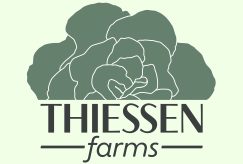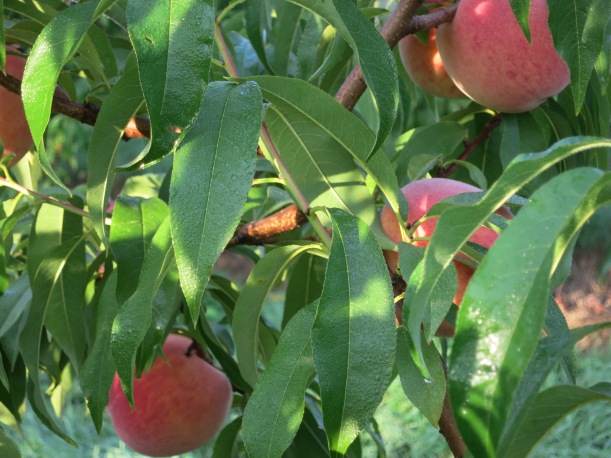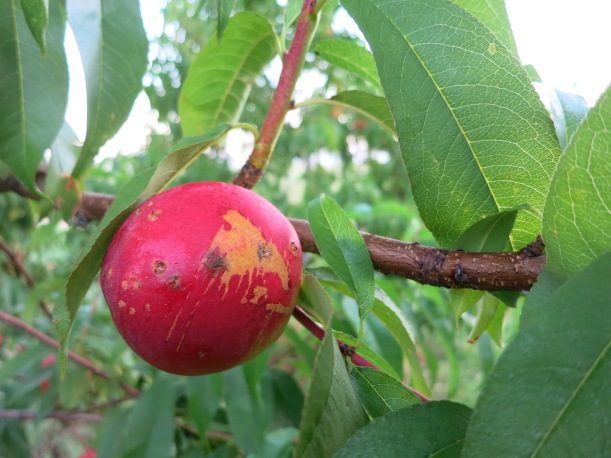The summer is flying by.
School starts in a week. Already we have lost one of our students, and the rest are finished work soon. That will leave only a few of us to do all the work of picking, packing & marketing the fruit & vegetables.
But in the orchard, it looks like fall already too. There are more rows of peaches picked, than rows with fruit remaining.
But the peaches that are still ripening look great.
The last variety of peaches that will be ripe in mid-September, are just starting to show some colour.
The tomato plants, while still yielding amazing amounts of fruit, are declining rapidly.
Our thoughts are turning to the fall crops … like squash,
prunes, & pears.
A new vegetable crop for us this year is collards. When some of the kale seed we needed was not available this past winter, we substituted collards in its place. CSA members can expect collards in their share this week.
What’s in the box?
Collard greens, blackberries, peaches, tomatoes, onions, sweet peppers.
- Collards or collard greens are usually associated with the southern USA. But, as we learned, they grow well in our area too. Collards are a nutritional goldmine, similar to kale & broccoli. They are low in calories, high in fibre, & rich in beta-carotene, vitamin C, calcium & B vitamins. They are rarely eaten raw, but are best prepared by boiling rapidly for 5-10 minutes which preserves nutrients, colour & taste. Then the collards are drained, dried & sautéed in a little oil with other vegetables or herbs & flavourings. Sauteing collards without boiling first is another cooking method. It results in slightly stronger flavoured greens with a chewier texture. We have included a simple collard recipe below. Let us know how you enjoyed your collards, so we can decide whether or not to grow them again.
- We are finally picking enough blackberries to offer a taste in your CSA share this week. Because the crop is light, it’s just a small taste. Don’t even pretend to take them home – just eat them in the car!
- Peaches – the flavour is even better on these later varieties. They do soften quickly, so keep them in the fridge.
- Tomatoes, onions, & peppers – We hope you continue to enjoy them. Eat them fresh, cook with them, or tuck them in the freezer to use this coming winter. Tomatoes can be frozen whole, onions minced & peppers chopped. Then just add them to soups, sauces or stews for a taste of summer.
Sauteed Collard Greens
ingredients
- collard greens
- 1 garlic clove
- 1 tablespoon butter
- 1 tablespoon olive oil
- 1 teaspoon fresh lemon juice, or to taste
preparation
Remove and discard stems and center ribs of collard greens. Cut leaves into 1-inch pieces. In a kettle of boiling water cook collards 5-10 minutes – until tender, but still bright green – and drain in a colander.
Mince garlic. In a heavy skillet heat butter and oil over moderately high heat until foam subsides and stir in garlic, collards, and salt and pepper to taste. Sauté collard mixture, stirring, until heated through, about 5 minutes.
Drizzle collards with lemon juice and toss well.
Thank you for remembering to return & reuse the boxes & containers!





































